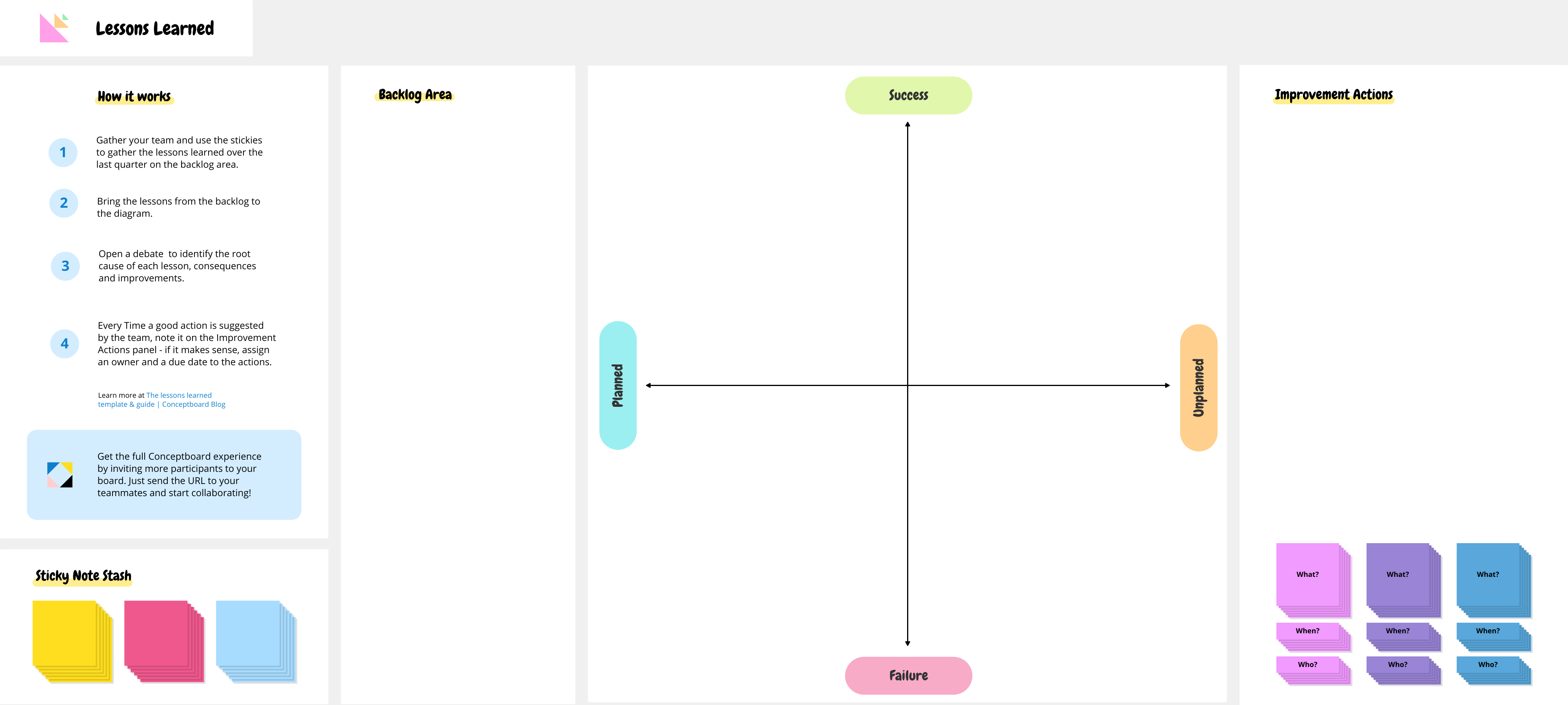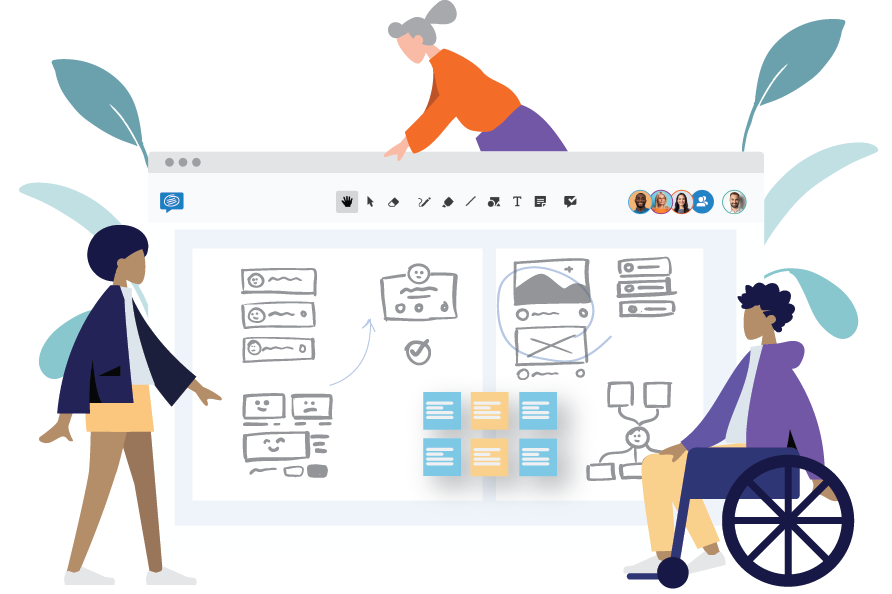This post is also available in: German
At the end of a project, it’s tempting to give yourself a pat on the back and jump straight into the next big thing. But it’s important to pause and take stock of what went well and what didn’t quite go to plan. This is where a Lessons Learned template can come in handy. It provides a clear, systematic way to document lessons learned, and can become a great project management resource down the track.
Even if the project was a roaring success, you will always find opportunities to learn and improve. Plus, you will always find things to celebrate and replicate!
Our collaborative lessons learned template is divided into four quadrants on a sliding scale of planned vs unplanned and success vs failure. It places equal value on capturing the failures but also the wins so they can be replicated for future projects. We’ve also rounded up 11 additional retrospective ideas alongside their corresponding templates to mix things up for your next sprint retrospective!
So let’s take a look at the template, and what you need to complete it.
Key questions to unlock the lessons learned
While the Project Manager should always document and analyze the lessons learned, the activity is much more powerful and beneficial if it’s conducted as a team. It can help to jot down notes in a project notebook along the way, but we understand that simply doesn’t happen sometimes. So to try and develop a comprehensive picture of all the lessons learned, try posing these questions to your team:
- What was challenging?
- What was beyond your control?
- What could have been handled better?
- What things surprised you that were unplanned?
- What things did you expect to happen, but they didn’t?
- What errors did you successfully avoid?
- What could we automate or simplify that is time-consuming or annoying?
- What skills did you need on this project?
- What bottlenecks did you experience?
- What actions can we take to ensure future teams or projects can learn from us?
- Were there any unintended consequences?
- Were there any unexpected successes?
- Was there any external positive feedback?
Get started with a free Lessons Learned template
We’ve created a free and simple Lessons Learned Template to help you get started.
- Share the link to the board with your team
- Assign colors to each category in the table: eg technology – red, staff – blue, management – green.
- Invite participants to share their thoughts on the board using colored sticky notes placed in the relevant quadrant depending on if they were planned or unplanned and successes or failures.
- Feel free to use the questions above to identify even more lessons.
- Discuss each idea to identify the root cause, consequences and improvements.
- At the end, you should be able to identify success and improvements.
- The final step is to assign any relevant action items to relevant people along with a due date.
Once you’ve completed the Lessons Learned matrix, it becomes a useful resource for other projects or teams, so feel free to share it with them. With Conceptboard, you can easily export your board as a PDF or a high-res image. A completed Lessons Learned session is a symbolic way to bookend a project, helping to signify that it’s time to move onto the next project.
Once you’ve used this tool once, it becomes so much easier to build it into future projects. That way, the knowledge base will become extremely rich with useful learnings and successes. Remember, treat your failures as learning opportunities and you’ll always continue improving! If you want to explore more of our tools to help you reach your business objectives, check out our collection of retrospective templates. Or catch up on the latest news on our blog.






1 Comment. Leave new
Thank you. Very process detailed and useful